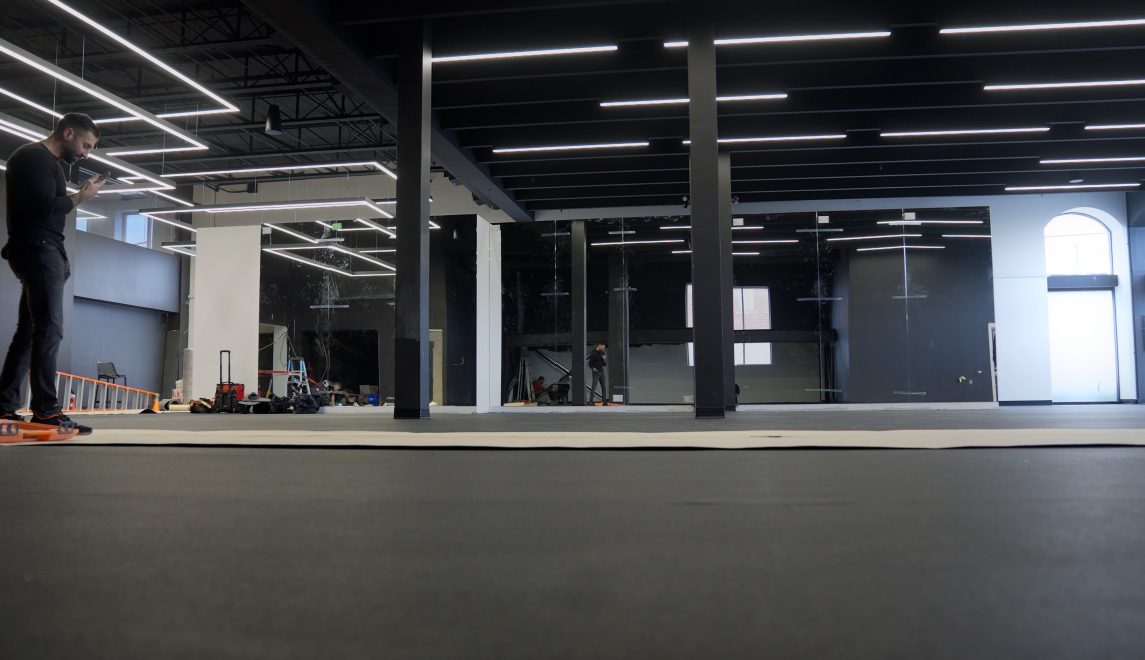How to Start a Gym in 2025: Lessons from Big Daddy Fitness

Opening a gym is one of the most rewarding—and demanding—entrepreneurial paths in the fitness industry. Behind every facility that thrives is a story of strategic choices, long hours, and a deep understanding of what clients actually need.
To help guide aspiring gym owners through the process, we sat down with Nicolas, founder of Big Daddy Fitness, to hear how he went from concept to community cornerstone, with Atlantis Strength at the heart of his facility.
From Vision to Reality: Big Daddy Fitness
Nico didn’t just want to open another gym. He wanted to build a space that would bring serious training back to the forefront, where equipment performance mattered as much as atmosphere. “We didn’t cut corners,” he says. “We chose Atlantis because we knew this was a long-term investment in quality.”
Located in a competitive market, Big Daddy Fitness is now known for its premium strength zone and member retention, largely thanks to the thoughtfulness put into equipment layout, programming, and environment.
Here’s how Nico made it happen, and what you should consider as you plan your own facility.
Step 1: Define Your Gym Model and Market
Before leasing a space or buying equipment, define who you’re building your gym for:
- Are you targeting competitive lifters, general fitness clients, or athletic teams?
- Will you operate a high-volume, low-cost model—or a boutique, high-value one?
- What’s missing in your area?
Nico took time to analyze the competitive landscape and saw a gap: few gyms offered both elite-grade equipment and an environment that felt accessible yet serious.
Pro tip: Use local market data, visit other gyms, and talk to trainers before committing to a direction.
Step 2: Build a Financial Plan That Accounts for Everything
Budgeting is more than calculating rent and equipment costs. Your plan should also cover:
- Renovations and layout work
- Marketing and launch promotions
- Staffing and onboarding
- Insurance, permits, and software
Nico warns: “It’s easy to underestimate startup costs. What saved us was building a 12-month cash flow plan—with room for surprises.”
When it came to equipment, he chose Atlantis because it offered long-term durability and biomechanics that reduce maintenance and injury risk—two key cost-savers over time.
Step 3: Choose Equipment That Supports Growth
Your equipment will define how people train—and how long they stay. Nicolas built his gym around Atlantis machines for three reasons:
- Precision biomechanics that help reduce joint stress and improve movement patterns.
- Customization options that aligned with his brand aesthetic.
- Durability that stands up to high-volume use.
“I didn’t want to replace machines every few years. With Atlantis, I’m building a gym that lasts.”
Not sure where to start? Focus on these essentials:
- Selectorized strength machines for onboarding new clients
- Plate-loaded machines for serious lifters
- Adjustable benches, power racks, and dumbbell zones
- Cardio zone (depending on your model)
Step 4: Plan for Lead Times and Delivery
Don’t wait until your lease is signed to order equipment. Between production, shipping, and installation, the process can take 3–4 months, especially if you’re ordering customized units or outfitting a full facility.
Some machines may be in stock, but many are built to order. For Big Daddy Fitness, early planning meant equipment arrived right on time, avoiding costly delays in launch.
Best practice: Contact your sales rep early to get an accurate delivery timeline. Your rep can also help optimize your layout and machine selection based on your floor plan.
Step 5: Build a Team and Culture That Reflect Your Vision
Nico built more than a gym; he built a community. That starts with hiring the right trainers and front-desk staff, and extends to programming, brand voice, and day-to-day operations.
From launch day, Big Daddy Fitness became known for high energy, professional coaching, and the no-compromise feel that Atlantis machines help reinforce.
Final Thoughts: Invest Where It Counts
Opening a gym isn’t just about aesthetics or trends. It’s about delivering an experience that drives retention, performance, and trust. Nico’s advice for new gym owners?
“Don’t settle on the equipment. It’s what your members will use every day. And it’s what they’ll talk about when they leave. If you want a gym that lasts, start with machines that are built to last.”
Read the testimonial here.